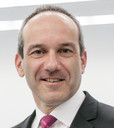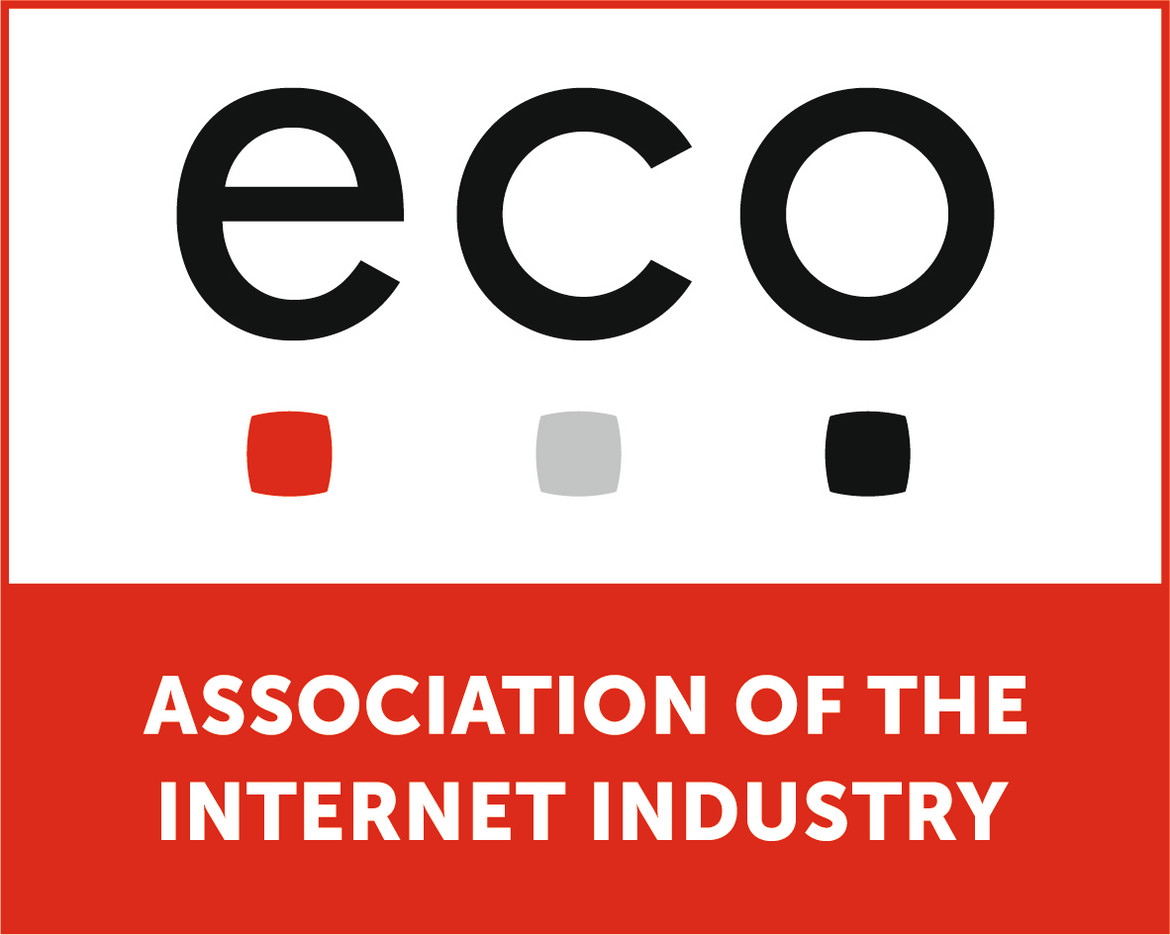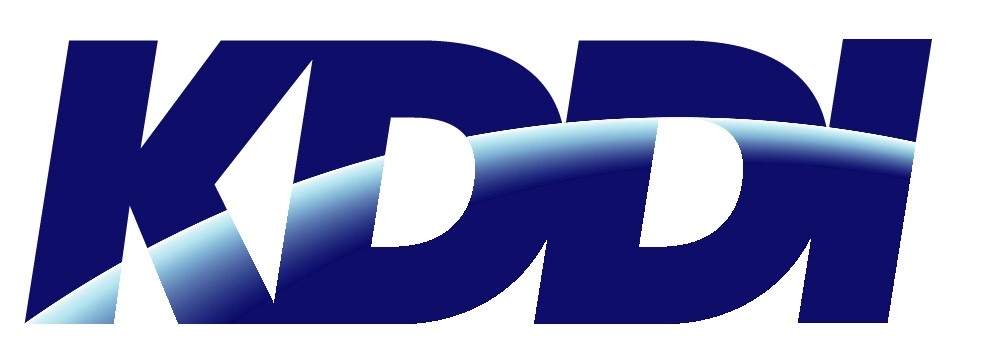Heat Recovery from Data Centers: A Win-Win Situation
Data centers and society both have much to gain from the use of waste heat, a topic elaborated upon in a white paper and by Béla Waldhauser, Leader of the eco Data Center Infrastructure Group.
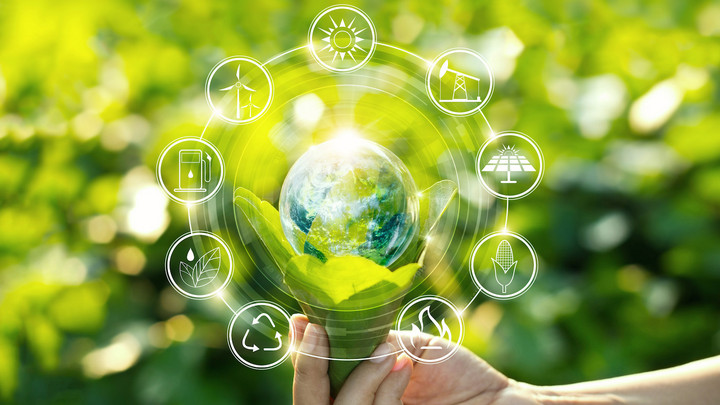
© ipopba | istockphoto.com
Modern data centers are now the beating heart of the world’s economic system. As such, the approach that data center operators take towards energy efficiency is of the utmost importance, at both national and global level.
Fortunately, the data center industry itself has demonstrated its determination to build and operate data centers in a manner which is as socially and environmentally-friendly as possible. Over the years, colocation and hosting providers have substantially enhanced their energy efficiency, through measures like innovative cooling processes and a greater focus on IT within data centers. As a result, large data centers in particular now only require a fraction (20 to 25%) of the electricity previously consumed for cooling. This means that the temperatures in a modern data center today bear no resemblance to the “refrigerators” of the past. What’s more, the share of energy from renewable sources is rising steadily, with some operators already opting for 100 percent green electricity.
However, as the demand of the population for digital applications grows exponentially, energy consumption will inevitably also steadily rise. By the end of this decade, 50 billion people, things, and processes are likely to be connected via the Internet! This colossal figure indicates the volume that data centers will have to contend with and how high-performance they will be expected to be. So just how can energy-efficiency oriented data centers respond to this apparent conundrum? And how should policy-makers support them in their endeavors? One answer that goes to the heart of this dilemma is to tap into the significant potential which is offered through the utilization of waste heat – and, crucially, to implement policies which will allow for this potential to be realized.
Just how much heat is being wasted?
In order to grasp the scope of this potential, we need first to understand the dimensions of the heat that is being wasted. In Germany, for example, more than 13 billion kilowatt hours (kWh) of electricity per year is currently being converted into heat, most of which is released unused into the environment. This corresponds roughly to the total electricity needs of a large city like Berlin. This is the arresting initial finding of a white paper, “Utilization of Waste Heat in the Data Center”, published by the eco Association and NeRZ (Netzwerk energieeffiziente Rechenzentren) – a paper which then proceeds to illustrate the wide range of possible uses for waste heat from data centers.
As the white paper reports, the data center industry is keenly interested in making meaningful use of the waste heat. In a NeRZ survey, 50% of data center operators in Germany, for example, stated that they see medium to very high savings potential through the utilization of waste heat. Yet, in spite of this interest, the heat continues to be squandered.
Reversing this trend requires not just more detailed information for the industry of what and how successful concepts can be implemented – it also urgently requires a policy re-think, in order to provide the economic framework to allow this to happen. And what should certainly be steered clear of is strident actions, such as the current halt to approvals for the construction of new data centers introduced last July in the Netherlands by Amsterdam’s local government. Such bold actions send the completely wrong signal. Our study “The Importance of Digital Infrastructures in Germany” shows how important data centers are for digital self-determination and how they are the growth engine of the Internet industry. Our key industry secures more than 200,000 jobs in Germany. If local authorities prohibit the construction of new data centers, they are simply jeopardizing economic growth and prosperity.
Essentially, what is required from governments is long-term foresighted planning – and here, waste heat can play a crucial role.
Potential uses for waste heat
The eco/NeRZ white paper looks at a range of successful use cases, particularly from Scandinavian countries, who are at the forefront of such innovations. To start with one example: Even at a temperature level of between 30 and 40°C, waste heat is being used by data centers to service nearby swimming pools or laundries. To home in on a second particularly interesting possibility for the future: greenhouses and, more specifically, vertical farming, can also contribute to a waste heat “win-win” situation. Vertical farming refers to an urban form of agriculture in which the production of plant and animal products takes place within the city in multi-storey buildings, allowing fruit, vegetables, and algae to be cultivated all year round on several vertically stacked layers. With foresighted planning and design, synergy effects with the data centers’ systems can be achieved.
The spectrum of possible applications expands even further at higher temperatures, and extends to the feeding of heat from data centers to local and district heating networks (see Figure 1 below). In Sweden, for example, waste heat from data centers is already being utilized intensively in district heating networks, into which 30 data centers (including Ericsson, H&M, Interxion, Bahnhof, and Digiplex) are already feeding their waste heat. In Stockholm, 10,000 households are already connected, 95% of them in the heart of Stockholm (see Ostler, 2018). By 2035, the waste heat from data centers is expected to meet one tenth of the metropolis’ heating requirements (see GTAI, 2018).
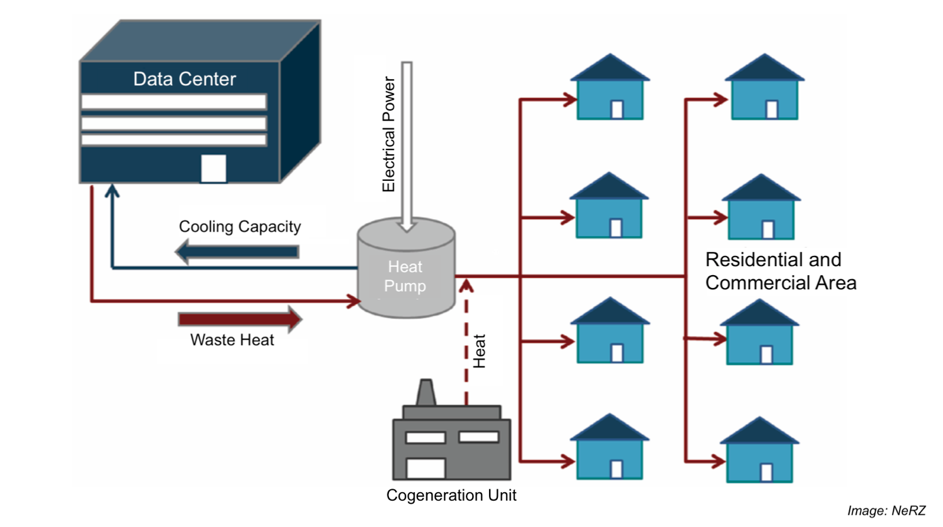
Fig 1: Basic structure of a local heating network with integration of a data center and a cogeneration unit. Source: eco – Association of the Internet Industry & NeRZ
Turning the key to utilizing waste heat
In order to achieve these higher temperatures, heat pumps are one key solution. A heat pump uses a technical process to absorb thermal energy from lower temperature sources and transfer it together with the operating energy to a higher temperature system. With the help of a heat pump, the waste heat of a data center can be brought to a level of 60°C and higher. Multi-stage heat pumps are also possible, with which a significantly higher temperature level of 150°C (or even higher) can be achieved.
However, whether the use of a heat pump makes economic sense for the utilization of waste heat depends in particular on how expensive it is to operate the heat pump technically. Here, electricity prices are decisive for cost-effectiveness. This varies from country to country. The high electricity prices in Germany mean that there
are only a few economically viable concepts in this country. Ultimately, the levy imposed on electricity by the EEG (German Renewable Energy Sources Act) for the operation of heat pumps makes no sense from an environmental policy perspective and prevents many opportunities to re-use waste heat cost-effectively and thus make digitalization more sustainable. As a result of the EEG levy, electricity prices in Germany are so high that the cost-effectiveness of waste heat utilization must be examined on a case-by-case basis.
Foresighted planning required
As a positive example, we can look to Scandinavian countries, where the use of waste heat is an integral part of energy policy concepts. In Sweden, for example, there is a broad societal consensus for promoting environmental aspects more strongly in digitalization – this also includes the sensible and sustainable use of waste heat from data centers. In Germany the general conditions are unfortunately not so good, so there are only a handful of such flagship projects in this country.
You can download the eco/NeRZ white paper “Utilization of Waste Heat in the Data Center” here.
GTAI (2018, 25 January) Stockholm will bis 2040 die „smarteste“ Stadt der Welt sein. Accessed on 8.5.2019. Available at: https://www.gtai.de/GTAI/Navigation/DE/Trade/Maerkte/suche,t=stockholm-will-bis-2040-die-smarteste-stadt-der-welt-sein,did=1856888.html
Ostler, U. (2018, 4 June)Datacenter in Schweden und in Deutschland – Best Practices versus Ignoranz.Accessed on 8.5.2019. Available at: https://www.datacenter-insider.de/datacenter-in-schweden-und-in-deutschland-best-practices-versus-ignoranz-a-718973/
Theoretical physicist Dr. Béla Waldhauser is Chief Executive Officer of Telehouse Deutschland GmbH and KDDI Deutschland GmbH. Previously he was responsible for the German operations of Global Switch, and prior to that TeleCity. Before this, he was Managing Director for Germany and Austria for Teleglobe. For several years, he has been Leader of the eco Competence Group "Data Center Infrastructure" and since 2011 Member of the Jury for the "German Data Center Prize" in conjunction with the annual "Future Thinking" congress. In 2014, he was invited by the German Federal Ministry of Education and Research, as an expert and as a member of the eco Association, to actively participate in establishing the new strategy platform for “ITC in Horizon 2020”. Dr. Waldhauser is also Spokesperson for the Alliance for Strengthening Digital Infrastructures in Germany, set up in early 2018 under the umbrella of eco to support Germany's development as a digital location.

